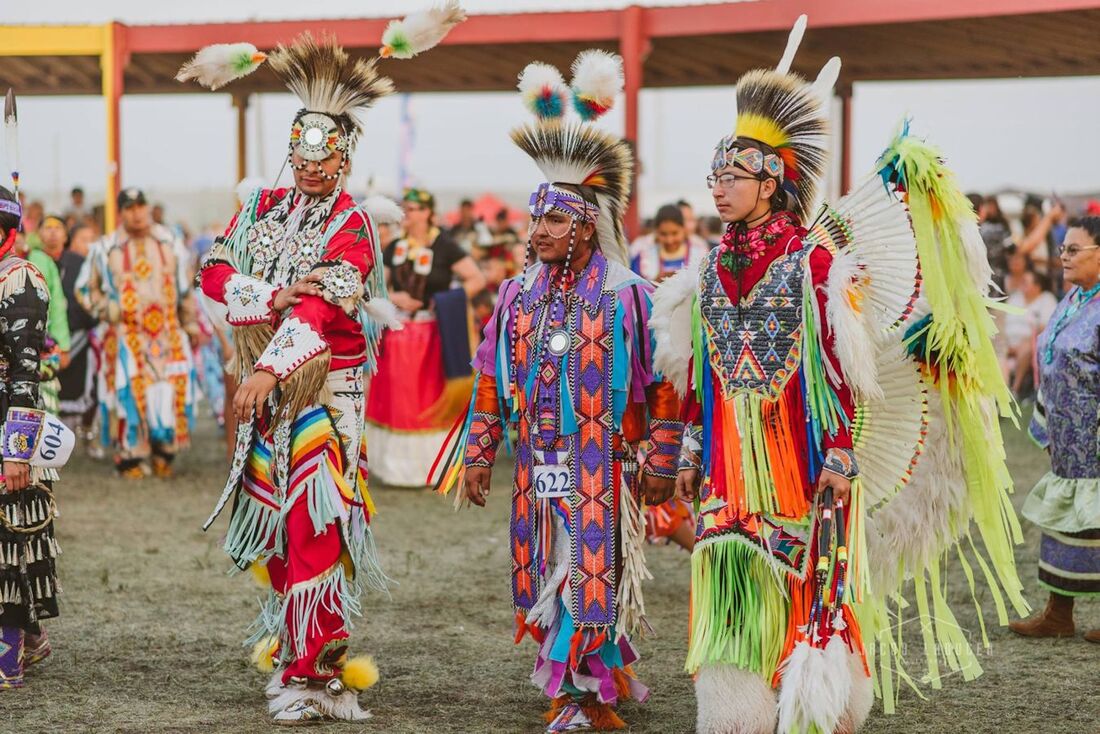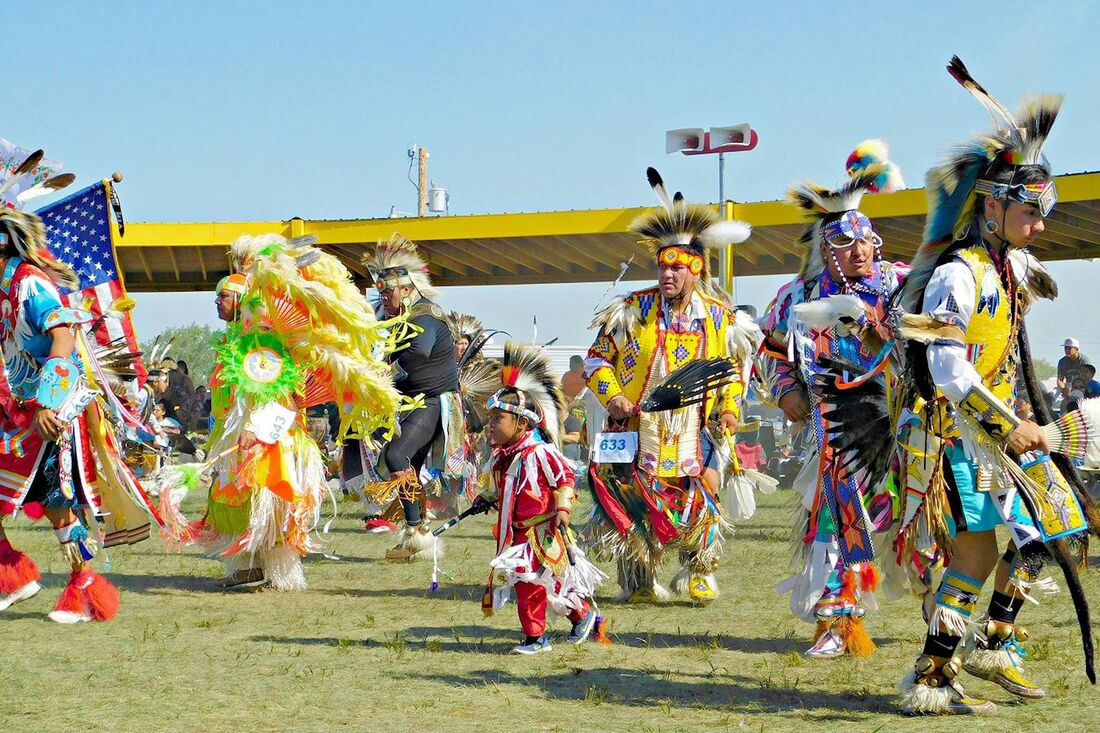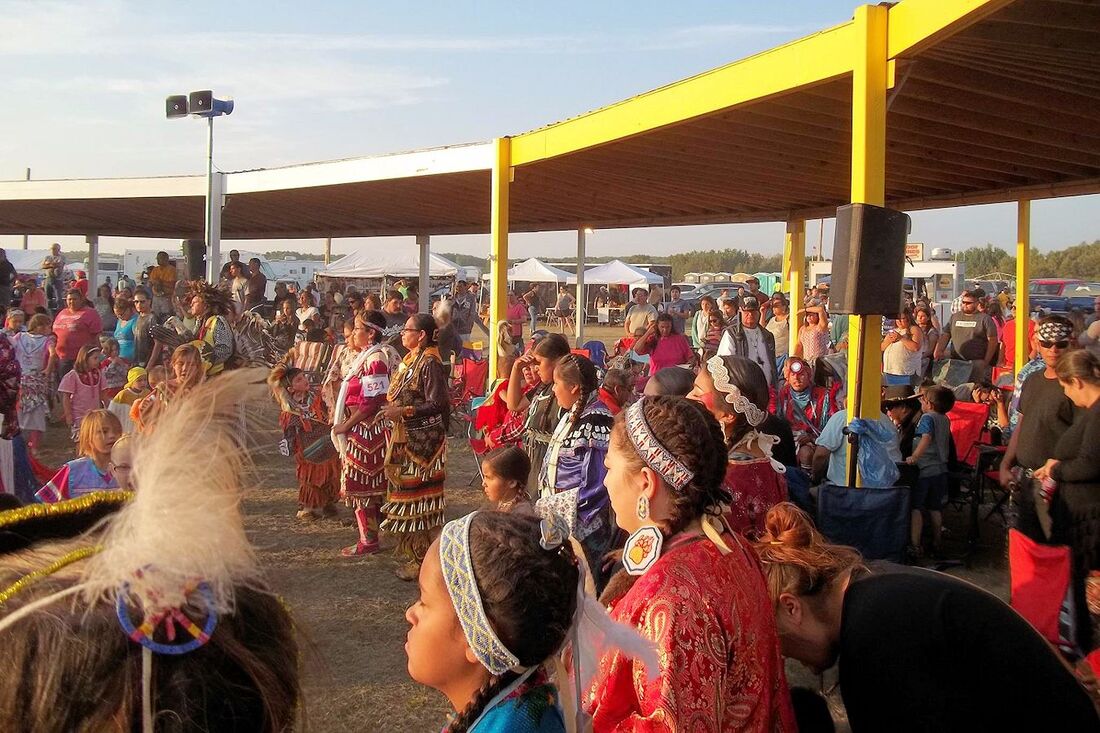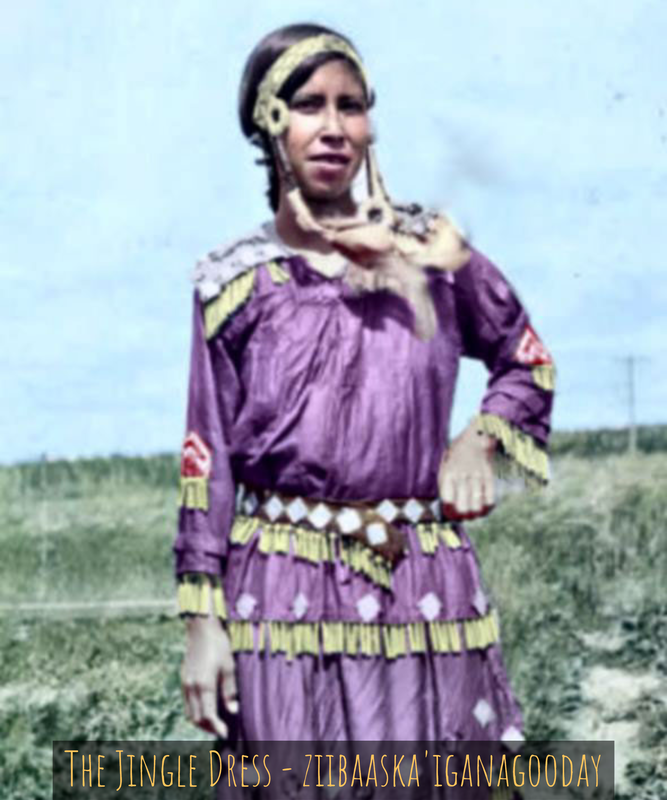Ni-mi-win: The Pow Wow
Pow Wows (or "Ni-mi-win" in the Ojibwe language) are the Native American people’s way of meeting together, to join in dancing, singing, visiting, renewing old friendships, and making new ones. They one of the best ways to experience Native American culture, music, and traditional crafts.
There are several different stories of how the powwow was started. Some believe that the War dance Societies of the Ponca and other Southern Plains Tribes were the origin of the powwow. Another belief is that when the Native American tribes were forced onto reservations the government also forced them to have dances for the public to come and see. Before each dance, they were lead through the town in a parade, which is the beginning of the Grand Entry.
Powwow singers are very important figures in the pow wow. Without t,hem there would be no dancing. The songs are of many varieties, from religious to war to social. As various tribes gathered together, they would share their songs, often changing the songs so singers of different tribes could join. With these changes came the use of “vocables” to replace the words of the old songs. Thus, some songs today are sung in “vocables” with no words. Yet they still hold special meaning to those who know the song. Many songs are still sung in Native American Languages either newly composed or revivals of old songs. These songs are reminders to the Indian people of their old ways and rich heritage.
Learn more at PowWows.com
There are several different stories of how the powwow was started. Some believe that the War dance Societies of the Ponca and other Southern Plains Tribes were the origin of the powwow. Another belief is that when the Native American tribes were forced onto reservations the government also forced them to have dances for the public to come and see. Before each dance, they were lead through the town in a parade, which is the beginning of the Grand Entry.
Powwow singers are very important figures in the pow wow. Without t,hem there would be no dancing. The songs are of many varieties, from religious to war to social. As various tribes gathered together, they would share their songs, often changing the songs so singers of different tribes could join. With these changes came the use of “vocables” to replace the words of the old songs. Thus, some songs today are sung in “vocables” with no words. Yet they still hold special meaning to those who know the song. Many songs are still sung in Native American Languages either newly composed or revivals of old songs. These songs are reminders to the Indian people of their old ways and rich heritage.
Learn more at PowWows.com
The Legend of the Jingle Dress
|
A healing dance that is at the heart of the Ojibwe Nation, the Jingle Dress (ziibaaska'iganagooday) originated long ago.
According to one legend, there was a powerful medicine man who had a beautiful and cherished granddaughter. One day she became sick. The grandfather was very concerned and he prayed to his manitou to help him heal his granddaughter. That night the manitou appeared to him in a dream. They showed him several women wearing beautiful dresses which made a powerful sound when they danced. The manitou taught him how to make the dress and what dance steps were to be performed. The manitou also played and sang to him the sort of songs that would make the dance work for healing his granddaughter and for healing the hearts of the Ojibwe people. In the morning, the grandfather and his wife started to make the dress together according to the directions given to him by the manitou. When the dress was finished, the grandfather and his wife took the dress to their granddaughter. She wore it into the center of the camp. A man took the drum and proceeded to sing a song as directed by the grandfather. Then, because the granddaughter was so weak, the grandfather and grandmother helped support the girl as she tried to dance around in a circle. On the second time around, she could walk a little more with their help, and on the third time she was dancing slowly on her own. During her fourth time around, she was dancing the Jingle Dress Dance and was healed of her sickness. Ever since, the Jingle Dress Dance has been regarded as powerful medicine and is considered by the Ojibwe to be the most beautiful of all dances at the pow wow. |
Men's Dance Styles
Grass Fancy Traditional Straight Women's Dance Styles Traditional Cloth Jingle Fancy Shawl |




